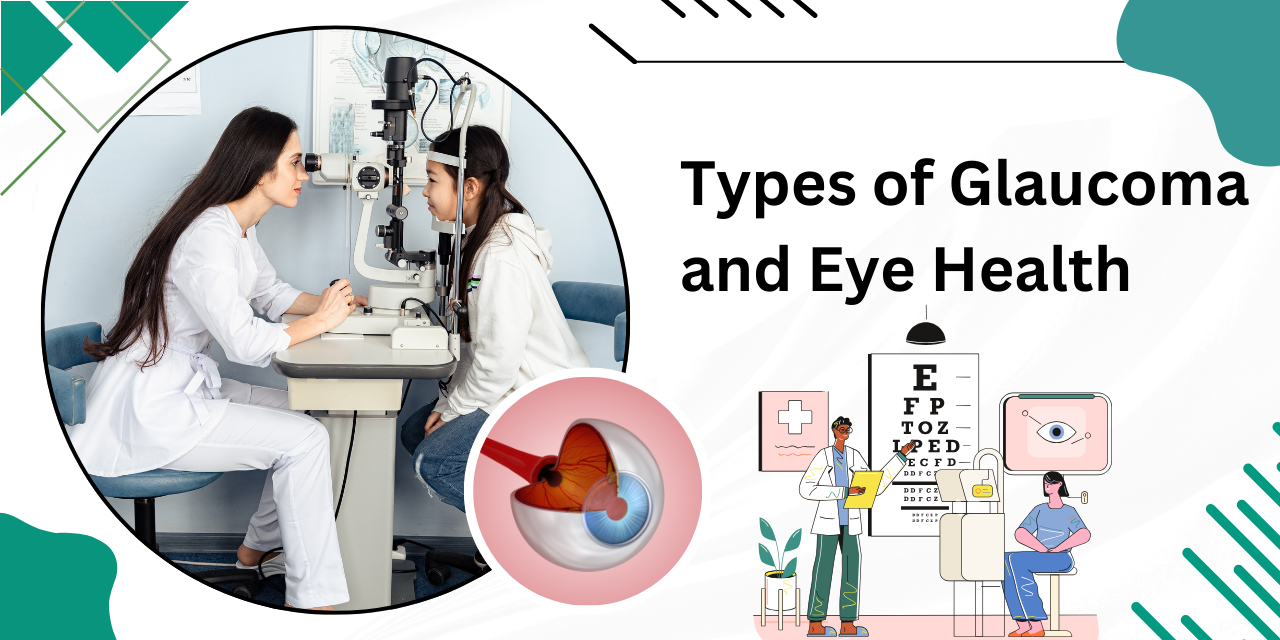Glaucoma is a group of eye disorders that can lead to irreversible vision loss and blindness if left untreated. It is often associated with increased intraocular pressure (IOP), which can damage the optic nerve. Understanding the various types of glaucoma is crucial for early detection and effective treatment, ultimately preserving eye health. In this article, we will explore the different types of glaucoma, their causes, symptoms, and impacts on eye health.
Primary Open-Angle Glaucoma (POAG)
Primary open-angle glaucoma is the most common form of glaucoma, accounting for approximately 90% of cases. It occurs when the drainage canals in the eye become blocked over time, leading to increased pressure. Regular eye exams are essential for early detection, as treatments such as eye drops, laser therapy, or surgery can help manage the condition and preserve vision
Angle-Closure Glaucoma
Less common but more severe, angle-closure glaucoma occurs when the iris blocks the drainage angle, causing a sudden spike in IOP. Symptoms include severe eye pain, nausea, and blurred vision, requiring immediate medical attention. Treatment may involve medications, laser therapy, or surgery.
Normal-Tension Glaucoma (NTG)
NTG involves optic nerve damage despite normal IOP levels. The cause is often unknown, but reduced blood flow to the optic nerve may play a role. Treatment focuses on lowering IOP with medications or surgery.
Secondary Glaucoma
Secondary glaucoma is a type of glaucoma that develops as a result of another medical condition or injury to the eye. Conditions such as diabetes, uveitis, or trauma can lead to increased intraocular pressure. The treatment for secondary glaucoma focuses on addressing the underlying cause while managing the increased IOP. This may involve medications, laser therapy, or surgery, depending on the severity of the condition.
Congenital Glaucoma
Congenital glaucoma is a rare form of glaucoma that occurs in infants and young children. It results from abnormal development of the eye’s drainage system during fetal growth, leading to increased IOP. Symptoms may include excessive tearing, sensitivity to light, and corneal enlargement. Early diagnosis and treatment are crucial for preventing vision loss. Surgical intervention is often necessary to correct the drainage issues and manage intraocular pressure.
How Glaucoma Affects Eye Health
Glaucoma can have a significant impact on eye health and overall quality of life. If left untreated, it can lead to irreversible vision loss, starting with peripheral vision and potentially progressing to total blindness. Regular eye exams are essential for early detection, particularly for individuals at higher risk, such as those with a family history of glaucoma, older adults, and individuals with certain medical conditions.
Prevention and Management
While not all types of glaucoma can be prevented, early detection through regular eye exams is key to managing the condition. Treatment options include:
- Medications: Eye drops are commonly prescribed to reduce intraocular pressure.
- Laser Therapy: Procedures like trabeculoplasty can help improve drainage.
- Surgery: In some cases, surgical intervention may be necessary to create a new drainage pathway.
Conclusion
Glaucoma is a serious condition that can lead to irreversible vision loss if not properly managed. Understanding the different types of glaucoma and their implications for eye health is vital. Early detection and treatment are key to preserving vision. For expert glaucoma treatment in Panchkula, consult Dr. Pradeep Gupta at AM Eye Hospital. To schedule an appointment or for more information, call us at +91 9418450221 Your vision is our priority!













